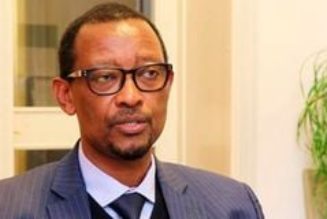
Kenya has cut back on its planned borrowing from the International Monetary Fund (IMF) by 7.2 percent to Sh465.4 billion ($3.6 billion) after partial repayment of the debut Eurobond that unnerved global investors.
This comes weeks after the country’s budget support from the World Bank was reduced in size by 20 percent to Sh155.2 billion ($1.2 billion).
The IMF has attributed this reduction in the size of the credit facility earmarked for Kenya to the February partial refinancing of the Sh258.7 billion ($2 billion) Eurobond due for maturity on June 24.
Kenya returned to the international markets in February, raising Sh193.9 billion ($1.5 billion) through a fresh Eurobond issuance whose maturity falls due in 2031. Proceeds from this Eurobond were used to partially buy back the Eurobond maturing in June. A buyback is a form of the process by which the repurchase of issued securities from holders or investors before the set maturity debt is done by the issuer.
The downward revision of the size of the IMF programme comes seven months after funds under the same programme had been increased in size by Sh121.3 billion ($938 million) to provide Kenya with access to cheap financing to retire the maturing Eurobond should the international markets have remained inaccessible as the June 2024 maturity approached.
“The mission continued virtually to finalise key technical aspects of the agreement including recalibrating access to IMF resources to align more closely with Kenya’s current needs following its access to the international bond markets earlier this year. If approved by the IMF’s Executive Board, the total remaining access will be adjusted to 135.55 percent of quota (SDR (Special Drawings Right) 735.77 million, about $976 million) which will also include a proposed recalibration of 21.67 percent of quota in access (SDR 117.6 million, about $156 million) toward the zero interest concessional resources under the ECF (Extended Credit Facility) arrangement,” the IMF says in its statement following the conclusion of the seventh review on June 11.
ECF provides medium-term financial assistance to low-income countries with protracted balance of payments problems. The SDR is an international reserve asset created by the IMF to supplement the official reserves of its member countries. The SDR is not a currency and can be used to boost a country’s liquidity.
The IMF programme size downgrade means the government now plans to tap into a loan that is Sh36.3 billion smaller than had been earlier anticipated under the ECF and the Extended Fund Facility (EFF) arrangement that has been running since March 2021.
EFF provides financial assistance to countries facing serious medium-term balance of payments problems because of structural weaknesses that require time to address. To help countries implement medium-term structural reforms, the EFF offers longer program engagement and a longer repayment period.
The IMF programme size downgrade also means that Kenya’s access to the fund’s exceptional window granted at the end of 2023 has been reversed, implying the fund views the economy’s present position as having improved and in less need of emergency financing.
So far, Kenya has accessed Sh337.3 billion ($2.6 billion) courtesy of the program following six reviews of performance-based disbursements.









